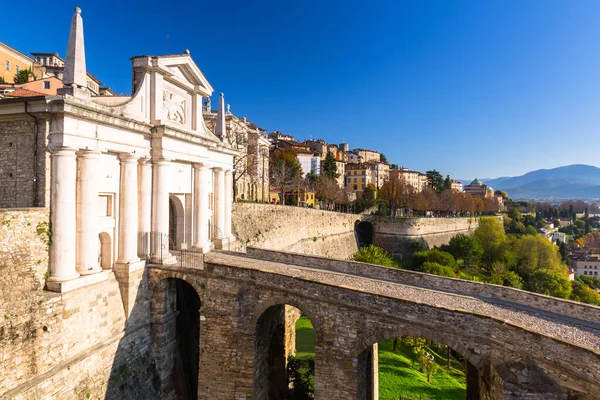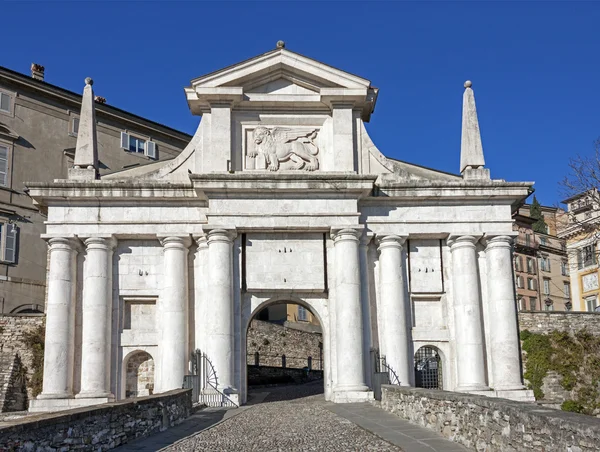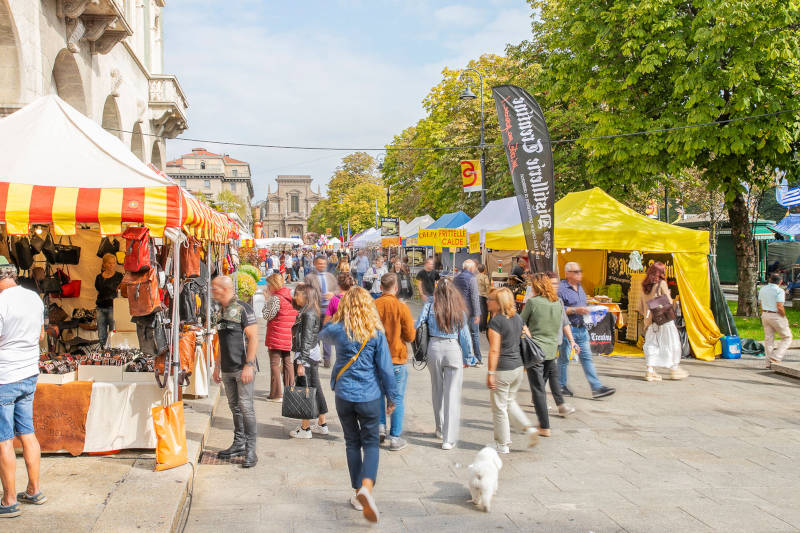Porta San Giacomo is one of the most striking and iconic gates of Bergamo’s Venetian Walls, a grand marble entrance that has welcomed visitors to the upper city (Città Alta) for centuries. With its majestic white facade and panoramic views of the lower city and surrounding countryside, Porta San Giacomo is not only a historical landmark but also a favorite viewpoint for both locals and tourists.
Historical Background
Porta San Giacomo was constructed in 1592 during the Venetian rule of Bergamo as part of the city’s extensive fortifications. At the time, Bergamo was strategically important to the Republic of Venice, which sought to defend its westernmost territories from the ongoing military threats posed by France and the Spanish Empire. As one of four main gates in the Venetian Walls, Porta San Giacomo controlled access to the upper city, playing a crucial role in the city’s defense network.
Unlike the other gates, which were primarily designed for military purposes, Porta San Giacomo had a more ceremonial function. This can be seen in its elegant design, which features fine white-pinkish marble sourced from the Zandobbio quarries in the province of Bergamo. The gate was primarily intended to be an impressive entrance for those arriving from the lower city and the surrounding plains, symbolizing the power and prosperity of Bergamo under Venetian rule.
Architectural Highlights
Porta San Giacomo is renowned for its distinctive architecture, which stands out from the more utilitarian design of the other gates in the Venetian Walls. Its facade is characterized by large, smoothly carved marble blocks, which give it a refined and almost regal appearance. Above the arched entranceway, you can see a decorative panel that once bore the emblem of the Republic of Venice — the winged lion of Saint Mark, a symbol of Venetian dominance.
The gate’s design is relatively simple but incredibly effective in conveying a sense of grandeur. Flanked by two large columns and topped with a triangular pediment, the structure embodies the Renaissance ideals of symmetry, balance, and classical proportions. The absence of heavy defensive features, such as drawbridges or portcullises, reflects its ceremonial nature as a symbol of welcome rather than fortification.
One of the most captivating aspects of Porta San Giacomo is its position on the southern side of Città Alta. The gate is perched on the hillside, offering breathtaking views of the lower city (Città Bassa), the surrounding plains, and the distant Alps. As you walk through the gate, you are immediately greeted by a panoramic vista that stretches as far as the eye can see, making it a perfect spot for photography and sightseeing.
Porta San Giacomo Today
In modern times, Porta San Giacomo has become one of the most popular landmarks in Bergamo. Its iconic marble facade and elevated location make it a must-visit site for anyone exploring the city. Visitors often begin or end their stroll along the Venetian Walls at this gate, using it as a scenic viewpoint and a starting point to explore the historical treasures of Città Alta.
Today, Porta San Giacomo remains remarkably well-preserved, thanks to restoration efforts that have ensured the marble maintains its original beauty. The gate is often used as a backdrop for cultural events and celebrations in Bergamo, reinforcing its importance not just as a historical monument but also as a living part of the city’s cultural fabric.

Porta San Giacomo is more than just an entrance to Città Alta—it’s a symbol of Bergamo’s rich history and its connection to the powerful Venetian Republic. With its stunning marble architecture, scenic location, and historical significance, this gate continues to enchant visitors and locals alike. Whether you’re a history enthusiast or simply in search of the best view in the city, Porta San Giacomo is an essential stop on any journey through Bergamo.





